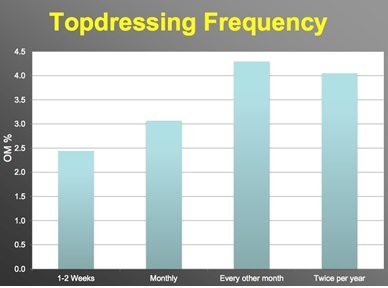New York State’s golf course BMPs were first published in 2014. Now five years later, we are updating the BMPs, in some cases adding new and updated information, including incorporating the pollinator BMPs (published in 2017). We have also incorporated discrete BMP statements to complement the BMP principles we identified in the first edition.
The draft final version of the Facility BMPs is available for download here: NYS_FacilityBMP_DraftFinal_05222019
To provide comments, please download the comment form here:
NYS Facility BMP_DraftFinalReview_CommentsForm
As part of the process of revising and updating, we are seeking input from superintendents across the state and the state’s regulatory agencies to review the draft final version and provide comments to NYGCF. Any superintendent or asst. superintendent in NYS is invited to participate in the review process. Superintendent reviewers should consider the content at three levels: the overall document, chapters, and page-by-page. The following are a few questions you may want to consider when reviewing:
- Are these BMPs something that can be implemented at your facility? How about facilities of varying sizes/budgets?
- Are there any topics that have not been covered in this document that you think should be addressed?
- Are there any topics that are covered, but may need additional detail?
- Is there any information presented that you think needs clarification?
Written comments submitted on or before July 16th to our project manager using the comment spreadsheet to submit comments. Please note: there are two pages in the spreadsheet – one each for specific comments and one for chapter comments. The superintendents on the NYGCF board and Cornell University scientists will review each comment and document how each comment is addressed in the final version.
NYGCF has undertaken the effort to create a facility BMP template to further implement BMPs across the state and to provide superintendents a process to make this process easy. Besides contributing to natural resources stewardship, additional incentives for golf courses in New York State to create a facility BMP plan and implement BMPs include the following:
- potential for more efficiently allocating resources by identifying management zones
- cost savings associated with applying less fertilizer and pesticide
- cost savings associated with more efficient irrigation and other water conservation efforts
- improving stormwater management efforts as storms in the area become more intense
- improved community relations`
- recognition by club members and the community at large as environmental stewards
We look forward to the input of superintendents across the state in this effort.
 The golfing season in northern climates includes managing cool-season turf playing surfaces through stressful summer months (e.g. high temperature, low moisture). To prepare for summer stress, use opportunities in the spring during dry periods to apply strategic moisture stress to your playing surfaces by purposefully withholding water from the plant. Allowing soils to dry and create stress in this way often results in increased rooting and improved drought stress tolerance that will pay off in the summer.
The golfing season in northern climates includes managing cool-season turf playing surfaces through stressful summer months (e.g. high temperature, low moisture). To prepare for summer stress, use opportunities in the spring during dry periods to apply strategic moisture stress to your playing surfaces by purposefully withholding water from the plant. Allowing soils to dry and create stress in this way often results in increased rooting and improved drought stress tolerance that will pay off in the summer.

 Drift when it comes to pesticide applications is something to be avoided, as it can potentially cause not only water quality impacts, but also damage to susceptible off target crops. In addition, a lower than intended rate of pesticide will be applied to the turfgrass, thus reducing its effectiveness. To avoid drift, the first step is to know the difference between types: airborne (spray) drift and vapor drift.
Drift when it comes to pesticide applications is something to be avoided, as it can potentially cause not only water quality impacts, but also damage to susceptible off target crops. In addition, a lower than intended rate of pesticide will be applied to the turfgrass, thus reducing its effectiveness. To avoid drift, the first step is to know the difference between types: airborne (spray) drift and vapor drift.

